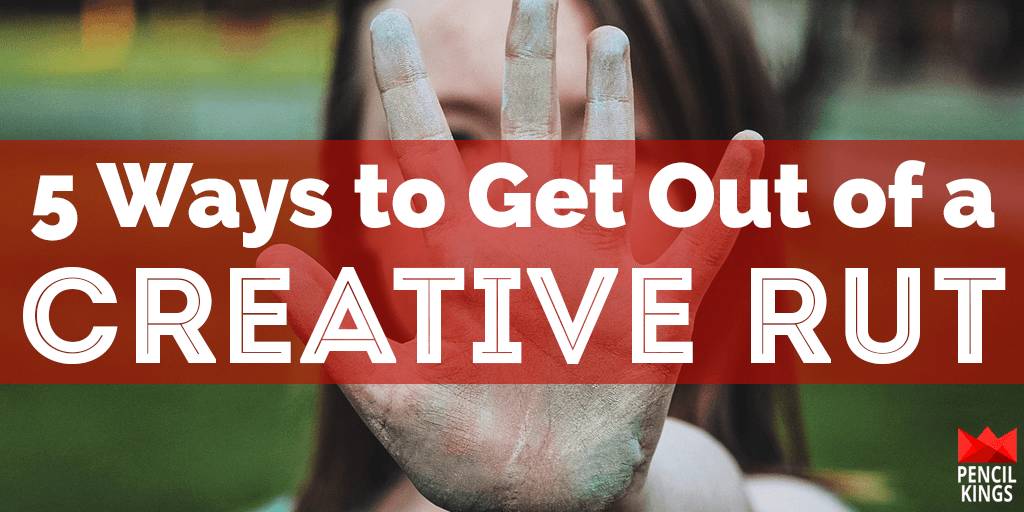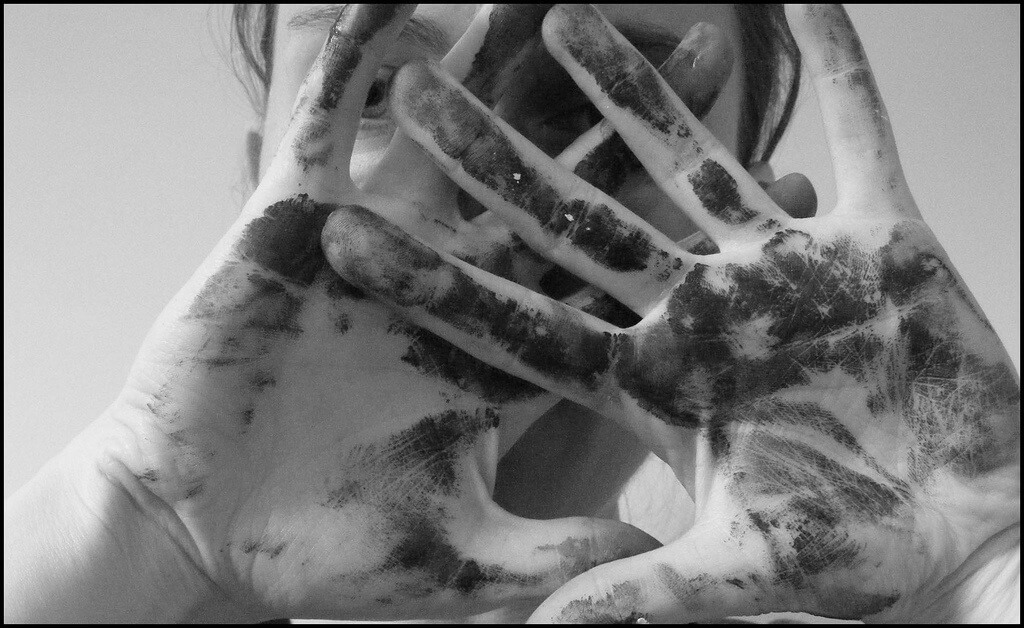 When searching for inspiration, many artists (us included), often miss the everyday objects to draw sitting right underneath our noses. It’s almost as if we can’t see the wood for the trees. Here we are, procrastinating and putting it off, when these objects we take for granted could get us out of a creative rut.
When searching for inspiration, many artists (us included), often miss the everyday objects to draw sitting right underneath our noses. It’s almost as if we can’t see the wood for the trees. Here we are, procrastinating and putting it off, when these objects we take for granted could get us out of a creative rut.
Take a look back through art history and you’ll see artists have found inspiration in even the most mundane sources. Whether it’s Van Gogh’s painting of a chair or any number of still life paintings, it seems there’s much to be gained from painting the ordinary. And, what’s more, finding commonplace objects to draw can really come in handy when you start to tackle more difficult subjects.
How so? Here’s the thing: Almost everything you can draw and paint is based upon simple shapes. Learning how to draw these can help take the mystique out of, say, learning to draw hands or tackling the anatomy of wild animals.
Once you’ve realized this, you’ve made an important step forward. You’ve decided there’s nothing to be afraid of here – even in the most difficult subjects. No matter how complicated it seems, what’s before your eyes is just a series of cylinders, squares, ovals and circles. If you can get that part right, you can worry about the details later.

Choosing Objects To Draw
This part is easy. Just pick anything – it doesn’t matter if it’s your favorite old pair of sneakers or a section of your dad’s garage. It doesn’t have to be pretty, it doesn’t have to have any great meaning and it certainly doesn’t have to be something you might wish to exhibit. Don’t set yourself any goals other than to draw what you see in front of your eyes.
You don’t even have to worry about composition if you don’t want to. This is all about training your artistic eye to break down those barriers in your brain and start developing the confidence you need as an artist to progress.
Why Finding Everyday Objects To Draw Can Help You As An Artist
As an artist, you’ll have certain things which you find difficult – if not downright impossible – to draw. It’s ok, we all do. Whether it’s hands, eyes, torsos, trees or clouds, every artist (ourselves included) has some kind of visual Achilles heel – the one subject they always avoid because it’s too tricky. It’s not like we don’t practice either – we spend hours of our time trying to get it to look right, and then get frustrated and demotivated when we fail yet again.
Here’s the thing: It’s ok to fail. You can feel free to fail as many times as you want to. Why? Because – and we know this might sound ridiculous – failure is not a negative thing. So your painting of someone’s hand ended up looking like a bunch of bananas again? Maybe it did, but just think of what you’ve learned here. You may not have cracked it yet, but your eyes and brain will have been working behind the scenes to help you tackle the problem differently next time. And, when you do, you’ll be making unconscious decisions about which marks to make.

Why Finding Objects To Draw Can Really Help You With Drawing Anatomy
Drawing the human body is notoriously difficult for many artists. That’s why life drawing is still held in such regard by art schools and the general public. The general opinion here is that you can draw or paint pretty much anything if you can draw anatomy correctly.
Pretty high stakes, huh? No wonder so many of us feel nervous and lack confidence at the prospect of drawing a fellow human being. However, when you start breaking down the parts of the body into a series of simple shapes, things start to become a lot more manageable. Not only that, but you can call upon what you’ve learned simply by finding mundane, everyday objects to draw.
Of course, we all know it goes much deeper than this. There are hundreds of books on anatomy to choose from, with super-detailed illustrations of muscle tissue and bone structure to refer to. However, it’s important not to dive in too deep to begin with. Just learn to start seeing the body as ovals, cylinders, triangles etc and you’ll find the more detailed knowledge will come as you. You may not know what a philtrum or metatarsal bones are yet, but this anatomical insight will develop naturally as you develop your life drawing skills.
Learning To See Everyday Objects in 3D
One of the biggest problems for all artists is learning how to see things in 3D and represent them in 2D. It’s almost like there’s a disconnect in our brains when trying to do this, and we wonder why the objects we’re drawing or painting just don’t look right.
Here’s our advice: Learn to see each and every object in 3D. Look at how objects relate to one another and how each curve, line, highlight and shadow is directly related to the 3D plane it’s sitting on. In doing this, it’s worth taking some time to practice perspective and getting a feel for how objects are represented in space.
Just like with anatomy, there’s no need to scare yourself with super in-depth technicalities (unless you really want to) – just try and get a general idea of how perspective works and take it from there. Again, you’ll find your knowledge will develop without you even realizing you’ve been learning something.

Tackling Difficult Objects To Draw Every Day
It’s amazing how many barriers we build up for ourselves. We tell ourselves we can’t paint landscapes because our clouds always look like candy floss or Slimer from Ghostbusters.
We avoid painting trees because we think ours just turn out only marginally better than pre-school drawings. We tell ourselves we should really try and master this, but the creativity killers at the back of our minds are whispering in our ears, saying: ‘Don’t bother, it’ll never turn out the way you want. Just accept the fact you’re no good at drawing (insert difficult object here).’
Here’s what you can do: If you’re looking for everyday objects to draw, there’s probably nothing more constant than trees, clouds and sky. They may change appearance throughout the day and from season to season, but they’re always there. And, the fundamentals for drawing and painting them remain the same.
So, get your sketchbook out and start drawing what you see. Again, keep telling yourself there’s nothing to be afraid of here – these tricky objects are just a series of shapes and shading. The more you look at them, the more you’ll begin to understand their form. As with anatomy and perspective, don’t drag yourself down with too much detail and technique to begin with. Just get used to drawing what you see and use this as a basis for learning more.
What have you got to lose if your drawing or painting doesn’t turn out right? Nothing. Your drawing or painting is in your sketchbook – your visual diary of your journey as an artist. You don’t need anyone else’s approval and you don’t even have to show it to anyone else if you don’t want to. What you’re doing here is between you and the great outdoors. You may not have produced the greatest skyscape in the world, but at least you’re well on your way to doing so.

How Everyday Routine Can Break a Creative Rut
We’ve just looked at how finding everyday objects to draw can help you break out of a creative rut and give you the confidence you need to progress as an artist. However, if you’re stuck for artistic ideas and sources of inspiration, it might also be worth taking a look at your daily routine.
Why do this? Everyone has a daily routine – the things they do upon waking up, their first cup of coffee or juice, the journeys they make to school or work, what they do on their lunch break etc. Now, we know this may sound pretty ordinary and boring, but bear with us on this. Your daily routine, dull and uninteresting as it may seem to you, is actually pretty unique.
Think about it. You’re probably the only person who sings that particular tune in the shower or passes by that particular building each day and imagines how it would look in a vibrant shade of red. You’re the only one who’s developed alternative lifestyles and identities for the people you see on buses and trains. You’re the only one who wears that particular wristband or item of jewellery to make you feel completely dressed.
Do you see what we’re getting at here? The most mundane, everyday things and actions can be a huge inspiration for you as an artist. We read an awesome graphic novel recently, called Naming Monsters by Hannah Eaton
The book describes the everyday life of Fran, a teenaged girl who believes she can communicate with a wide range of folkloric monsters. In her journey, she encounters such creatures as the Black Dog, an Incubus and the Kappa. The pencil and ink drawings that fill the pages of this book help convey the complete ordinariness of Fran’s life, but manage to also capture the sense of danger and mystery of the situations she finds herself in.
Of course, we hope you’re not visited by scary monsters like Fran is, but we’re pretty sure drawing or painting your daily routine could really help you as an artist. Not only will it be interesting for others to look at, it will also help you deal with some of the deeper emotions that run through your mind during the course of an average day.
Why not keep your sketchbook with you all the time and start making daily sketches? Before you know it, you’ll have built up a sizeable collection of images and observations which are uniquely your own. Is there anything more inspiring than that?
